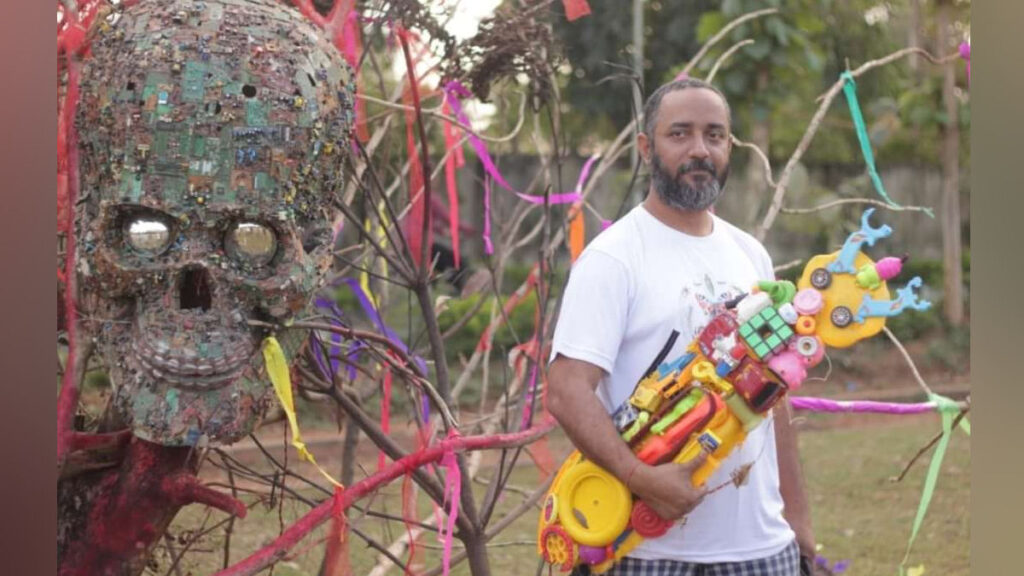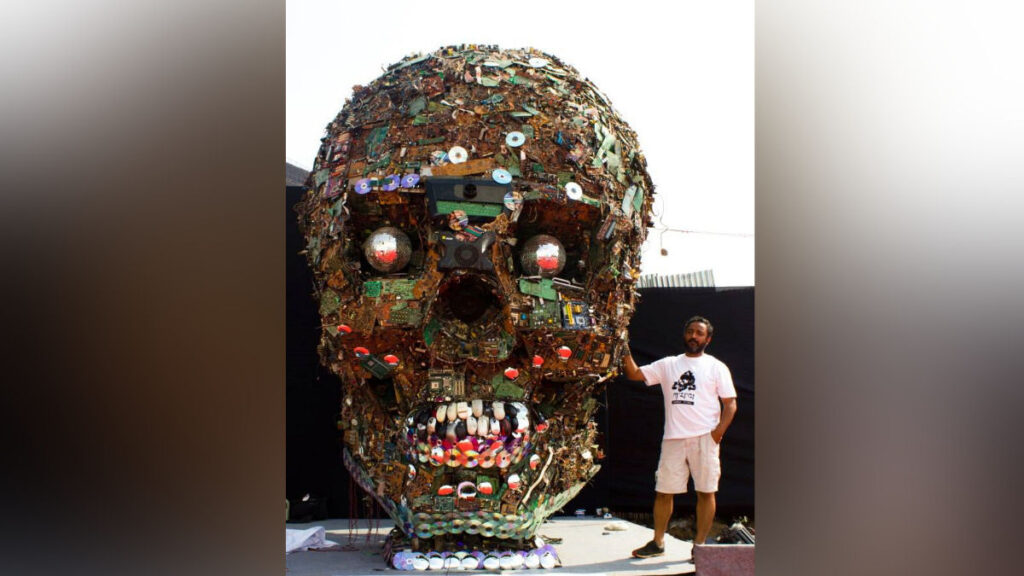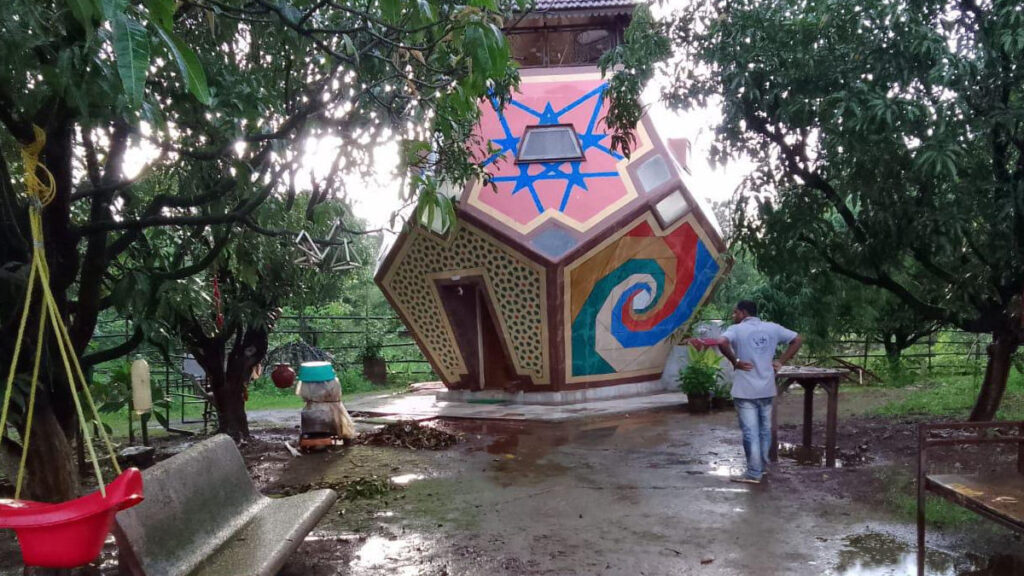Making Art Through Art Direction
Italian author Pietro Aretino’s quote “I am, indeed, a king, because I know how to rule myself”, best suits one of the most popular Art Directors of B-town, Sukant Panigrahy. Growing up in Aska, Ganjam, Sukanta has made a mark in the Hindi film industry with his unique style of art direction in more than 100 films out of which more than 50 are with some of the biggest production houses. Belonging to a well-to-do family, Sukant left his lavish life to achieve something which he had never dreamed of. Apart from the support of his family, his only wish was to make an unique identity for himself.

Recipient of many national and international awards for his superb art direction in designing brilliant sets, Sukant’s career gathered full steam after working as an Assistant Art Director in the iconic film Dilwale Dulhania Le Jayenge. After about 7 years of the release of the iconic film, his first independent art direction project came at the age of 25 in the form of the movie Gangajal by Prakash Jha. Since then this creative genius has never looked back and has gone on to create magic for films like Fanaa, Chak de India, Dev D, Aaja Nachle, D-Day, Fitoor, Ek tha Tiger, Chillar Party, Tashan, Bheja Fry 2, Jhoom Barabar Jhoom, Dil Bole Hadippa!, Badmaash Company, No One Killed Jessica, Heroine, Mardaani 2, Josef – Born in Grace, Manikarnika: The Queen of Jhansi, Sonu Ke Titu Ki Sweety, Dishoom, Rocky Handsome, and more.
My City links interacted with Sukant for an exclusive interview here are the excerpts.
What made you skip your 12th exams and leave for Bhubaneswar?
I was good at studies, but during my class 12 I realised that even after completing graduation most of the young people in my area are either becoming tuition teachers or opening betel shops. So, I thought if this is the end result then what is the point behind studying so much. This made me think of doing something different from what others are doing. I didn’t have any idea of what I was going to do, but I knew that it had to be something different. So I skipped my 12th board exams and to hide my face from my friends who passed and from my relatives of course, I left for Bubaneswar. I read a lot of books to get ideas for my work. I was not running away from my studies, I was running to achieve something.
What made you go to Mumbai then?
From a newspaper ad I got to know about a person who was providing training in martial arts at Bhubaneswar. I thought of taking up martial arts as a serious sport and I reached out to him. I used to live at the training hall there. Once I was very hungry and I had no money but I couldn’t push myself to ask anybody for food. That’s when I thought I couldn’t survive here. Then I got a job in a small audio shop called ‘Sursangeet’. I used to walk almost six kilometres everyday from the Baramunda bus terminal to the shop near the railway station. I used to get a measly salary of Rs 300. Unfortunately the day I got my first salary it was stolen. It was Rakhi Purnima and I had promised my sister that I would visit her. After requesting a bus conductor to allow me to travel without a ticket, I reached Aska to meet my sister. I borrowed some money from her and decided to leave Bhubaneswar and shift to a bigger city to get better and more opportunities.

I thought If I have to struggle then it will be better for me to do it in a bigger city like Mumbai. I took the Konark Express train, and told myself “Yeh train mujhe chodna nahi hai” (I cannot miss this train). Although I didn’t have a ticket or any address to reach in Mumbai, I just made a decision and did it somehow. I am the youngest in my joint family. No one from my family had gone out of Odisha back then. For me it was my first train ride.
Do you remember when you discovered that you can be a good artist?
When I was in class 2, our art teacher drew a tiger on the blackboard and announced that it was a competition to find out who can draw it the best and he or she will be made the monitor of the class. I did my best and he appreciated it. That little appreciation motivated me a lot to practice more and do better. I didn’t know anything about how arts can be someone’s career back in those days.
I have never taken any formal training in art. When I reached Mumbai, I worked in tea shops, hotels and various other small shops to make a living. I was clear in my mind that I will not beg or get into any illegal work, especially drugs. I have seen many youths of my age doing drugs and wasting their life away.
What inspired you to explore the world beyond your hometown?
Back in the days when we didn’t have a TV, one of my uncles used to bring National Geographic magazines for me. I found out that there are so many other countries and places in the world and I am just stuck in a small town. So I wanted to travel and see the world. Mumbai became my gateway to see the world. I wanted to do something and make a mark. I just had to find out what I am good at.
How did you enter the entertainment world?

I met my first mentor Ajit Pattnaik at the wedding of his younger brother who is my friend from Aska. Ajit sir used to work as an art director in Mumbai. I don’t know how I reached him in Mumbai but after the meeting he took me under his wings and I started working with him as an assistant. That’s how I got into the world of entertainment. I was only 17 and people used to bully me on the sets. I took it sportively and promised myself that I will prove my capabilities and will excel in my work. Now, in my career of almost about 20 years, most of the people who bullied me have worked under me.
Have you faced any issues with language in your initial days?
I used to watch a lot of Hindi and English films. So I picked up the languages very fast and now I am quite good at both.
You have mentioned earlier that the turning point in your life was meeting the award-winning Art Director Sarmistha Roy. Tell us about your bond with her.
Yeah, that’s true. After getting the opportunity to work with her in the film DDLJ, we developed a great rapport. We shot the iconic song ‘Ruk Ja O Dil Deewane’ at a restaurant in London. For the first time I was getting Rs. 2000 per day while working for the film. I call her ‘Didi’ and have worked together continuously till the film Mohabbatein. We are still in touch and she always cares for me and mentors like an elder sister. Her father, legendary art director Sudhendu Roy has taught me a lot about the craft.
Seeing your success, how is the response from your family since they have had other plans for you?

My family members still think I am not well settled today because for them settling means a good family life with a wife and kids. I think for an artist like me it’s not so easy to carry family and art at the same time. I am struggling in that part; I feel it’s very difficult for an artist to have a so-called settled life because we are constantly searching for something. We have no fixed targets like many other professions. The support I get from my family now is that they are not bothering me much; they may have accepted that I am a crazy person (chuckles).
What’s your take on the Odia entertainment industry?
I am in touch with people like Kapilash Bhuyan and Susant Mishra from our Odia entertainment industry. Both of them are my good friends. Many years ago I started the Bhubaneswar Film Club with a few of my friends at Bhubaneswar. But unfortunately a few unwanted things stopped us from growing further with that. For one year I completely stayed at Bhubaneswar to make some collaborations and wanted to do some good films but I was disheartened with the response.
Among all your films, which is very special to you and why?
Every film is special for me as I always try to give my 100% effort to each film. But to name a few I would say I have very good experience while working for films like ‘Chak De India’, ‘Bhopal: A Prayer for Rain’, Yashraj films like ‘Ek Tha Tiger’ and many more.
Can you name any well-known B-town star you have good rapport with?
Honestly speaking, while we work on the set they behave very well, but after the shoot gets over and the work is done they hardly recognise us. So I don’t have any such bonding with anyone. I also want to mention here that theatre actors like Naseeruddin Shah are very humble and they do talk with everybody very nicely than many others.

What’s your thought on the changing time and trends of filmmaking?
I am really happy for the new generation of filmmakers as they are thinking out of the box. Currently I am working for a web-series with Neeraj Pandey, the director of the film ‘A Wednesday’. I like his way of working and I am very happy to see that well deserved actors are getting good opportunities to show their craft. It’s a good change I would say.
How many people and time it takes for planning or designing a film?
I have 10-15 permanent people in my group. It all depends on the project. Sometimes we even hire 1000 artists. It takes around 9 months to make designs for a film. So it’s like producing a human baby (chuckles) for us.
Your film ‘Dev D’ got rave reviews. Tell us about the experience of working with Anurag Kasyap.
Anurag Kasyap gave me the freedom for ‘Dev D’ to work my way. As many films have already been made on the story before, it was challenging for me to make my take different from others. I created a brothel in Delhi that is very different from what we see in real life. He appreciated my work and I feel as an artist I always need that kind of freedom to make my work better.
You have made a mark in art direction. What’s next?
I have worked on different sets and observed how each director works and how the cameraman operates. I did some theatre courses where I met a mentor who taught me about film appreciation and how films can be impactful. It’s a great medium. I fell in love with this craft and I am still learning to understand it better. Now I am on to filmmaking. I am pitching new stories and reading a lot of stories from our own state, Odisha. I want to bring unheard stories of our state to the silver screen.
What’s your message for the aspirants?
You have to be very serious about whatever you want to do. You should convince yourself first that this is what you want to do. Then your effort will convince your family. In today’s generation parents are at least listening to their kids. The best thing is you have to communicate it with them.

Author: Jyoti Prakash Sahoo
Hailing from the entertainment industry, Jyoti started his career as a cine journalist in 2017. He is an anchor, actor and creative writer too. Currently working as the Content Head of the Odia entertainment YouTube channel 'Mo TV', Jyoti also loves to write human interest and positive stories that can inspire the readers.
Read more from author


